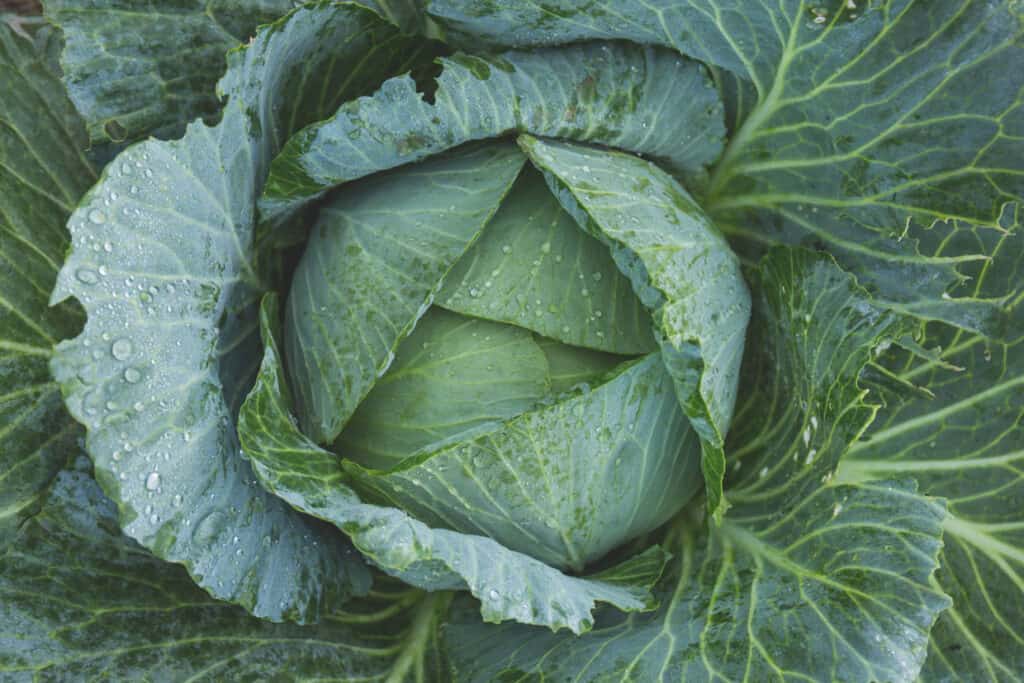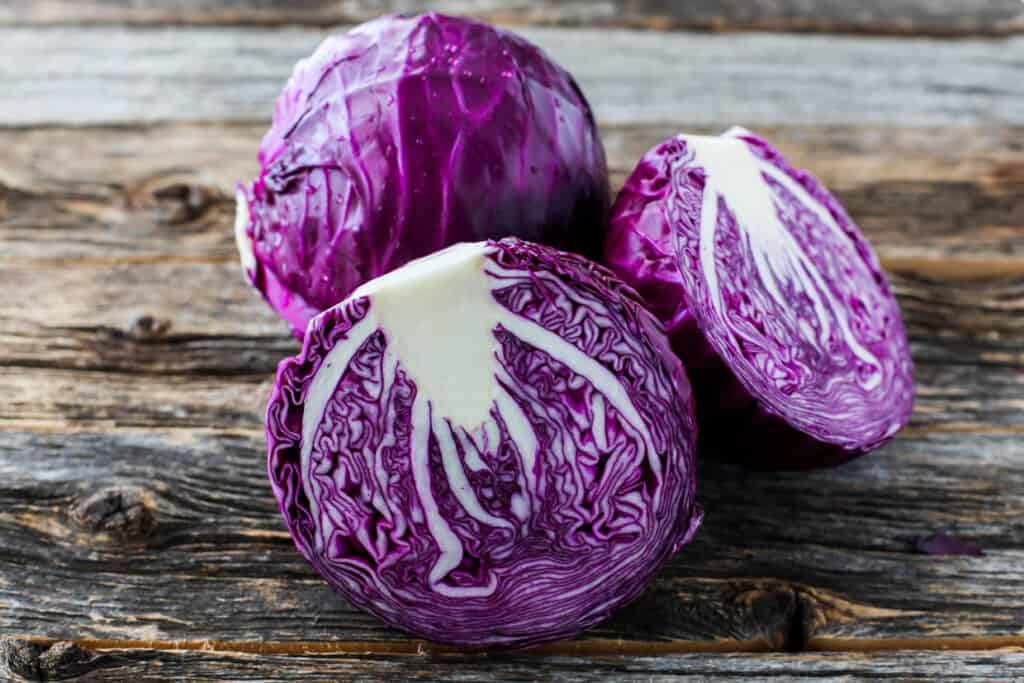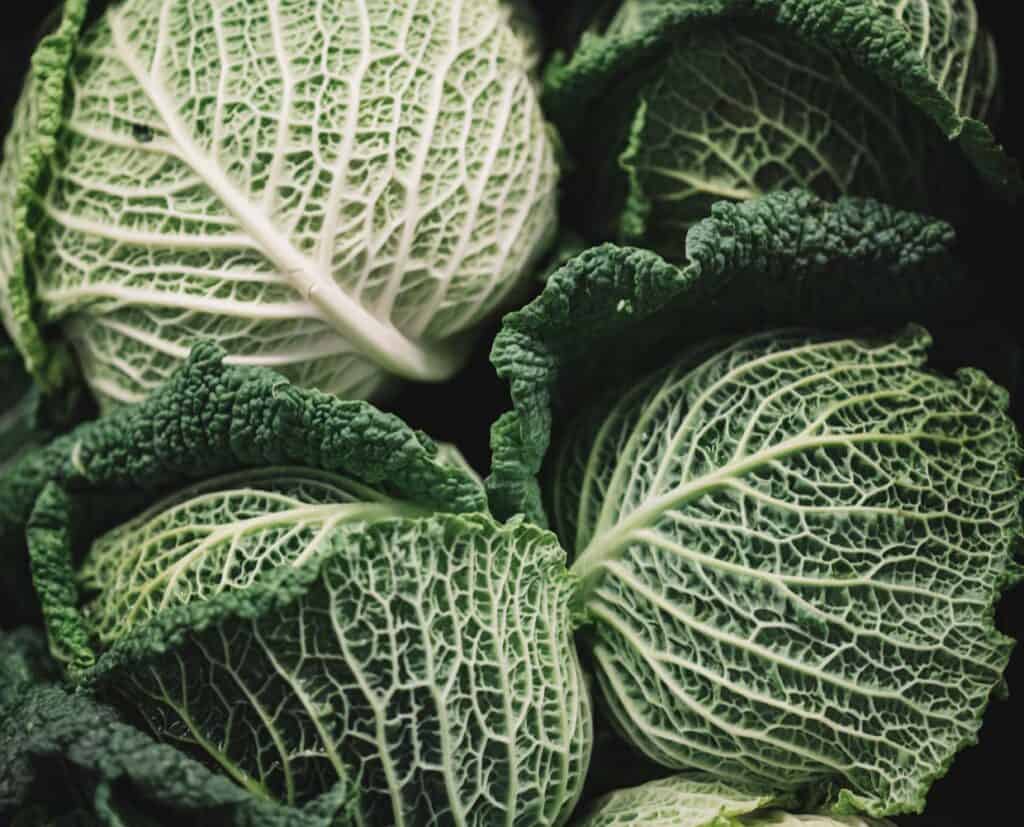Everyone loves a good coleslaw but when it comes to cabbage, there’s a lot more to it than just a picnic condiment. This unassuming cruciferous leafy green vegetable comes in a variety of shapes, colors and flavors. From the classic green cabbage to the intriguing wrinkled leaves of Savoy cabbage, each type has unique qualities that make it a versatile ingredient in a range of dishes.

Discover some of the most popular types of cabbage and explore creative ways to use them in meals.
What is cabbage?
Cabbage is a leafy vegetable belonging to the Brassica family along with other notable crucifers like broccoli, radishes and kale.
Despite its long-standing history of use in cuisines around the world, it’s often overlooked in the kitchens of home cooks today. No place is this truer than in the US where cabbage has an unfortunate reputation as a smelly overcooked vegetable relegated to St. Patrick’s Day celebrations accompanying corned beef.
Benefits of cabbage
Like many cruciferous greens, the nutrient profile of cabbage is impressive by any standards. Boosting large amounts of vitamin K, vitamin C and fiber per cup as well as smaller amounts of many other micronutrients, incorporating cabbage into your diet is an all-around solid choice.
Besides vitamin C, all sulfur-rich cruciferous vegetables including cabbage contain an antioxidant called sulforaphane. This specific antioxidant is tied to many anti-inflammatory effects in the body such as anti-cancerous properties, heart health and blood sugar regulation.

FDL’S 75 Best Bites

Our cookbook with 75 tasty recipes will be your go-to kitchen companion for easy dinners with ad-free recipes right at your fingertips. Crafted by experienced chefs and recipe developers, this collection offers a treasure trove of tried-and-true dishes that make mealtime a breeze.
Get the Recipe: FDL’S 75 Best Bites
Types of cabbage
There are seemingly endless varieties of cabbage grown all over the world so we’ll focus on the select types you’re likely to stumble across at the local grocery store or farmer’s market.
Green cabbage
Green cabbage is classic and the most widely found variety. If you’re looking for a basic cabbage workhorse, this is the type for you. The outer leaves range from dark green to a pale hue while the inner smaller leaves are almost white.
When eaten raw, the texture of green cabbage has a rubbery feel to it with a subtle peppery taste. For that reason, it’s often sliced very thinly in raw preparations. Once cooked, the peppery kick mellows out significantly making it a great addition to stir-fries or skillet meals.
Because of the thick ribs and this cabbage’s sturdy nature, it holds up well to roasting and grilling.
Most notably, green cabbage is popular for its use in coleslaws, corned beef dishes, cabbage rolls and cabbage soup.
Red or purple cabbage
Red cabbage is very similar to green cabbage. Anything you do with green cabbage can also be done with red or purple cabbage. This cabbage type takes longer to mature so the inner leaves are not as tender as the green variety.
Anthocyanins are the compound responsible for the striking deep purple color of this cabbage and many other red-colored fruits and vegetables. This compound is part of a larger category of plant-based chemicals called flavonoids. Flavonoids act as an antioxidant so when you hear the term “eat the rainbow,” there’s a good reason for it and red cabbage can be a healthy part of that goal.
One thing to be aware of, however, is the red pigment will seep out and bleed into surrounding ingredients. If you don’t want that appearance in your dish, stick to green cabbage.
Red cabbage is classically used as a pickled topping for things like tacos or BBQ sandwiches. It’s also often paired with sweet ingredients like apples and raisins and is delicious when served with pork chops or duck.
Try fermenting red cabbage for all the benefits of naturally occurring probiotics
Pro tip:
Red cabbage will often turn blue when cooked with any alkaline substance (like most tap water). To avoid this, add something acidic like fresh lemon juice or vinegar and the original color should return.

Napa cabbage
Napa, sometimes called Chinese cabbage, is the most tender of the cabbage types. It’s yellow-green with an oblong shape and leaves that are tightly packed together. The inner ribs are much less substantial than the red and green varieties making napa a great choice for more delicate preparations.
If you’re looking to eat cabbage raw, napa is a good choice as it’s the most lettuce-like of all the varieties. Its flavor is mild with a nice crispy and fresh texture. One of the most simple ways to enjoy this variety is to thinly slice then dress lightly with an oil, acid and seasoning of your choice.
It’s commonly used in Asian stir-fries, traditional fermentations like kimchi as well as soups.
“I love cabbage mostly for making sauerkraut out of it. For generations, our family recipe is followed to the dots and having your own sauerkraut throughout the whole winter is something out of the ordinary.” — Zuzana Paar, Lowcarb-Nocarb
Savoy cabbage
Of all the types of cabbage, Savoy is the most noteworthy in appearance. Originating from the Mediterranean region (it’s debated as to whether it’s French or Italian), the green leaves of the Savoy cabbage have a striking crinkled appearance that makes it stand out in a crowd of crucifers.
While round like green and red cabbages, the leaves of this cabbage are packed much looser due to their waffle-like nature. The unique texture is not just for show either, it also affords a bit of flexibility to the leaf making Savoy a great candidate for cabbage rolls or dumplings.
Its taste is mild and sweet and lends itself wonderfully to braises and soups. If you’re looking for an added visual element to any cabbage dish, consider this variety. Its fun frills won’t disappoint.
Pointed cabbage
Pointed cabbage, also called hispi cabbage, is another more exciting type of cabbage that is often found in farmers’ markets during the season.
The leaves of pointed cabbage are similar in color to green cabbage but the appearance is both smaller and not surprisingly, pointed.
It’s also more tender and sweeter tasting than green cabbage making it a good choice for quick and easy dishes like stir-fries or skillet meals. Slicing a pointed cabbage in half, brushing with oil or butter and roasting is a delectable side dish with a striking presentation.
“Cabbage is a staple for several traditional Filipino dishes my family serves on special occasions. It’s a key ingredient that adds flavor in both pancit and lumpia.” — Lisa MarcAurele, Little Bit Recipes

Brussels sprouts
This variety of cabbage has long endured an unfair reputation as being mushy, bitter and smelly. Thankfully these adorable mini cabbages have made quite the comeback in recent years now that we’ve all realized boiling is probably not the best way to enjoy them.
With the proper preparation method, Brussels sprouts are some of the most delicious of all the cabbage varieties. Their innate nutty and slightly sweet flavor is highlighted best by roasting and they caramelize beautifully in the process. They’re also exceptional when thinly sliced and sauteed in butter or grated finely and tossed into salads with a touch of honey.
Brussels sprouts are grown on stalks and can sometimes be found sold this way during the fall and winter seasons. Roasting a whole Brussels sprout stalk makes quite the statement on any holiday table.
Concluding the cabbage craze
Cabbage is one small part of a diverse group of cruciferous vegetables. With the many health benefits and delicious tasting varieties available, a part worth incorporating into your diet. Whether you’re a traditionalist and loyal to green cabbage or someone looking to try something new with a pointed cabbage in hand, there are plenty of options to explore and many more recipes to try.
Gina Matsoukas is the photographer, writer, and recipe creator of Running to the Kitchen. Focusing on healthy, seasonal, whole-food recipes, her work has been featured in various online and print publications including Food Network, Prevention Magazine, and Women’s Health. Gina lives in central New York, where she enjoys an active outdoor life.